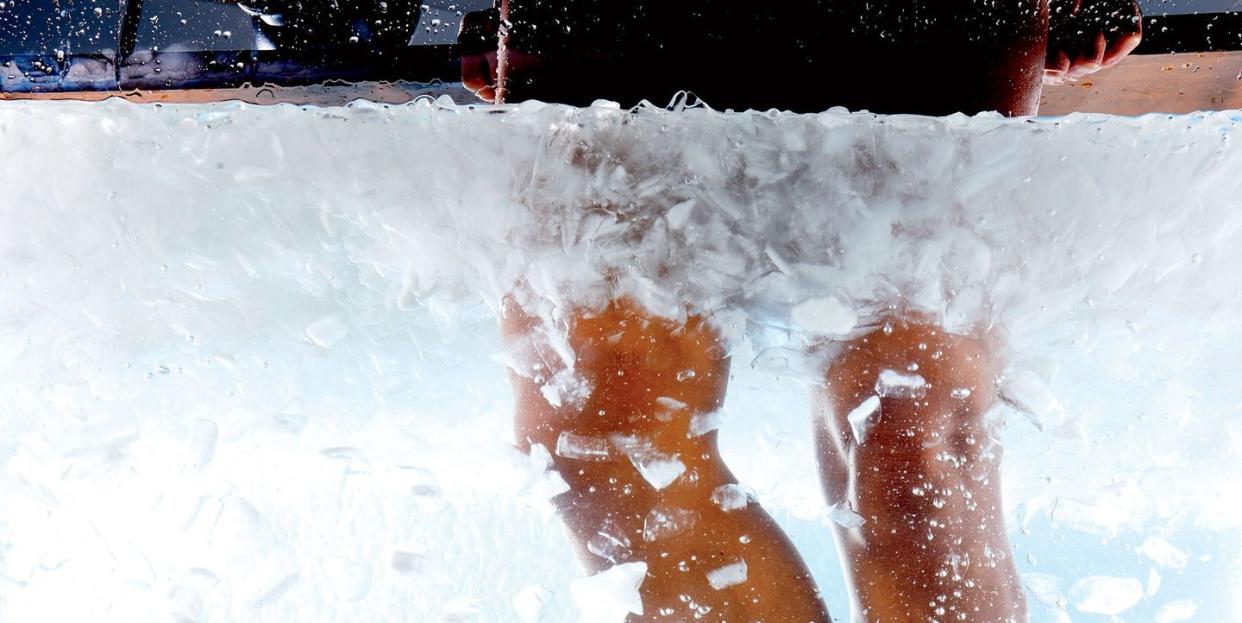Ice Baths Do Help Muscle Soreness, But Athletes Should Avoid Using Them Regularly

"Hearst Magazines and Yahoo may earn commission or revenue on some items through the links below."
According to new research in the journal Sports Medicine, there’s no advantage to cold-water immersion (i.e. ice baths) with aerobic exercise training, and it may have a detrimental effect on resistance training adaptations, too.
This is because ice water can delay muscle repair significantly, because it inhibits muscle cell activity.
Alternate methods—such as wearing a compression garment, doing active recovery, and focusing on quality sleep—are better for boosting recovery.
Seeing an athlete in a bathtub full of ice water—complete with chunks of ice floating on the surface—is fairly common in movies and professional sports coverage, as a way to show how athletes lower inflammation quickly to boost recovery. But do ice baths really have legit benefits? According to recent research, the technique may be more cinematic than effective.
A meta-analysis published in the journal Sports Medicine looked at eight studies that had five common factors: controlled conditions, performed on humans, associated with a training program, immersion performed at 15 degrees Celsius (59 degrees Fahrenheit) or below, and measurements taken both before and after immersion.
Subscribe to Bicycling All Access to become a faster, stronger rider!
Researchers found that a dip into super cold water wasn’t an advantage with aerobic exercise training, as it had little effect on performance, such as faster speed or more power.
They also noted it could have a detrimental effect on resistance training adaptations. For instance, those who used cold-water immersion saw a decrease in performance such as one-rep max amounts, strength endurance, maximal isometric strength, and ballistic performance. That means the amount you’re able to lift, how long you can hold a weight in one position, and how well you can jump were all negatively affected by an icy bath.
In terms of why it’s a knock to strength training and has no effect on aerobic activity, the main reason is related to modifications in muscle repair and protein synthesis processes, according to the study’s lead author, Alessandro Zagatto, Ph.D., associate professor in the department of physical education at Sao Paulo State University in Brazil. For example, he noted, past research has reported that cold-water immersion can delay muscle repair significantly because it inhibits muscle cell activity.
If that’s the case, why do athletes seem to use it so often? Because it does have a place in certain conditions, he added.
“In my opinion, athletes must avoid its use regularly,” he told Bicycling. “However, it does have an important analgesic [pain relieving] effect, so if you have competitions with several games or events in a shorter time interval, where performance would be altered by muscles soreness, it could be helpful.”
So, if you’re using it as a way to get better results on your next ride, you may want to try an alternative recovery method, he said, such as wearing a compression garment, doing active recovery, and focusing on quality sleep. But if you are going on back-to-back rides, some crushed ice may help relieve sore muscles.
You Might Also Like

